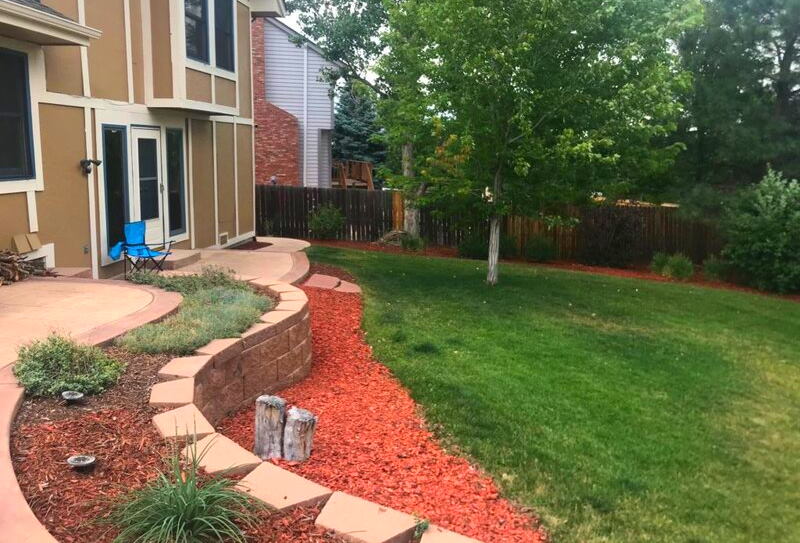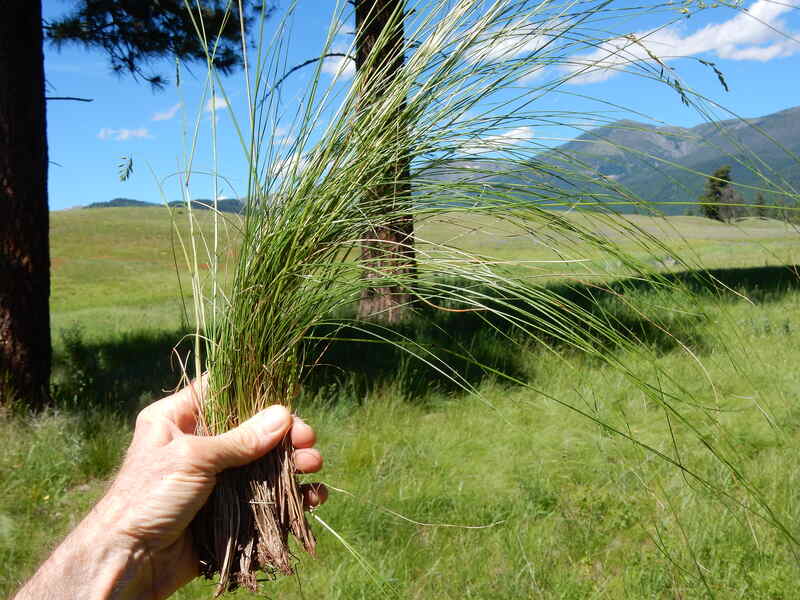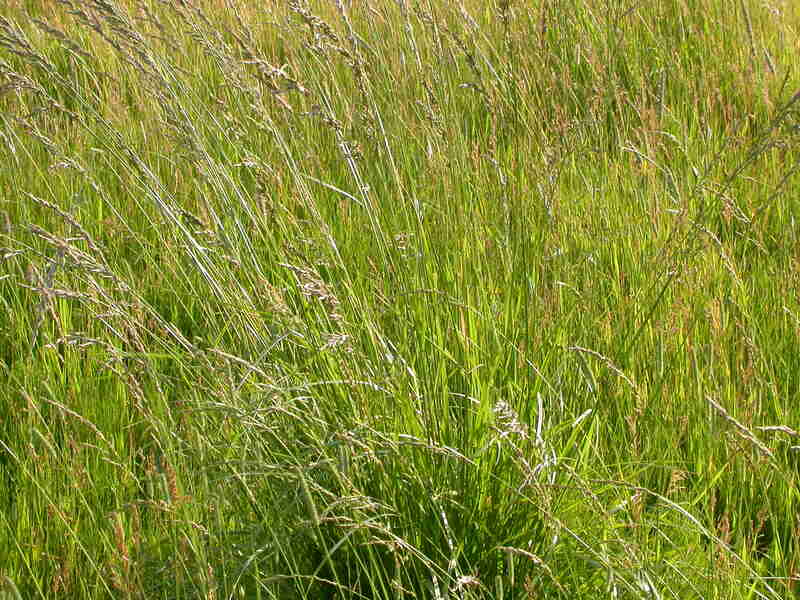Best Grass Seed for Eastern Washington
BY CECILIA ACEVEDO | MAY 8TH, 2023 | EASTERN WASHINGTON, LAWN CAREWelcome to Eastern Washington, where the vast open spaces, rugged terrain, and arid climate provide a unique setting for the perfect lawn. But with so many different types of grass seeds available, choosing the right one can take time and effort. Don’t worry–– we have done the research and unearthed the best grass seeds for the region. So relax, grab a good cup of coffee, and let’s enter into the world of the best grass seeds for Eastern Washington.
In this article:
- Best Grass Seeds for Western Washington
- FAQ About Eastern Washington Grass Seeds
- Choosing Plant and Grass Varieties for Your Washington Landscape
Warm-Season vs. Cool-Season Grasses
When choosing the right type of grass for your lawn, warm-season, and cool-season grasses are the two major categories.
Warm-season grasses are well-suited for hot, humid climates and typically go dormant during the cold winter months. They are ideally suited for areas with hot summers and short, mild winters. When the temperatures drop below freezing, warm-season grass turns brown and goes dormant.
Conversely, cool-season grasses flourish in air temperatures ranging from 60 to 75 degrees Fahrenheit and prefer mild to cool weather for optimal growth. During the summer months, cool-season grasses may become brown and go into dormancy, but they stay green and lush for spring and autumn. They’ll enter winter dormancy during periods of extreme cold.
If you’re looking to sow grass for your lawn in Eastern Washington, you’ll need to consider the climate. This region experiences dry and chilly weather, which makes cool-season grasses the optimal choice.
4 Cool-Season Grasses for Eastern Washington
1. Kentucky Bluegrass

Photo Credit: Brenda Ryan / Wikilawn
Kentucky bluegrass is known for its dark green color and medium to fine texture; this grass is sure to enhance the appearance of any outdoor space. But the benefits continue beyond there. With its dense, vigorous root system and sod formation, Kentucky bluegrass also helps prevent erosion on uplands.
Notably, this grass has a limited tolerance for shade, making it more suitable for sun-drenched areas. Additionally, it has moderate traffic tolerance and is prone to thatch. But don’t let that discourage you! Kentucky Bluegrass is an excellent winter hardiness lawn grass option for any yard with moderate drought tolerance.
Classification: Cool-season grass
Spreads by: Rhizomes
Shade tolerance: Low. Prefers full sun.
Drought tolerance: Moderate
Foot traffic tolerance: Moderate
Maintenance needs: Moderate mowing frequency and high fertilization needs.
Mowing height: Set mowing height between 2.5 and 3.5 inches.
Potential for disease: Moderate to high; prone to several diseases, such as dollar spot, leaf spot, necrotic ring spot, summer patch, and stripe smut.
Soil pH: 6-7.5
Soil type: Performs best in well-drained, heavy soils with high fertility.
Other notes: It is widely utilized in pastures due to its high tolerance for heavy grazing. However, it’s important to note that varieties developed for lawn use require more frequent watering, dethatching, and fertilization than those used for animal feeding purposes.
2. Perennial Ryegrass

Photo Credit: Dr Mary Gillham Archive Project / Flickr / CC BY 2.0
Looking for the ideal grass to elevate the appearance of your eastern Washington yard? Perennial ryegrass may be the answer. Its striking dark green color adds beauty to your outdoor space. This grass is widely used on golf courses because it can withstand foot traffic and low mowing. Perfect for high-traffic outdoor areas, it can germinate within 5 to 7 days.
However, it’s essential to consider that this grass has poor drought and shade tolerance, so it’s best suited for sunny areas and regular watering. One of the best things about perennial ryegrass is that it doesn’t produce significant thatch, making it easy to maintain.
Classification: Cool-season grass
Spreads by: Has a bunch-type growth habit
Shade tolerance: Low
Drought tolerance: Low
Foot traffic tolerance: High
Maintenance needs: Moderate mowing and fertilization requirements. Thatch is not significant.
Mowing height: Set mowing height to 1.5 to 2.5 inches
Potential for disease: High. Common diseases include gray leaf spot, red thread, and leaf spot/melting-out.
Soil pH: Can grow in soils with a pH between 5 and 8, but prefers between 6 and 7.
Soil type: Prefers good drainage and fertility, but can tolerate some poor drainage.
Other notes: Mixing Kentucky bluegrass with perennial ryegrass enhances the durability of lawns against foot traffic and diseases while aiding in weed control.
3. Fine Fescue

Photo Credit: Matt Lavin / Flickr / CC BY-SA 2.0
If you’re looking for a shade-tolerant grass type that’s easy to maintain, fine fescue is an excellent choice. This turfgrass species is known for its low maintenance requirements, which means less work for you. It also has low fertilizer and mowing needs, which means you can save both time and money.
Comprising at least five distinct types – hard fescue, chewings fescue, sheep fescue, creeping red fescue, and slender creeping red fescue – the fine fescues are one of the most intricate categories of turfgrass species. Each fescue grass type has its unique appearance and is best used in specific areas. Mixtures of fine fescues and other cool-season turf grasses are commonly used for low-maintenance lawns as fine fescues are rarely seeded alone.
While fine fescue has low to moderate traffic tolerance, it is still an excellent choice for homeowners who prioritize ease of maintenance and a beautiful, light green lawn.
Classification: Cool-season grass
Spreads by: Creeping red Fescue spreads by rhizomes, while other fine fescues are bunch-type grasses, such as chewing, hard, and sheep fescues.
Shade tolerance: Moderate to High, depending on species.
Drought tolerance: Moderate to High, depending on species.
Foot traffic tolerance: Low to Moderate, depending on species.
Maintenance needs: Low fertilizer and mowing needs.
Mowing height: Set mowing height between 2.5 and 4.0 inches, depending on species.
Potential for disease: Moderate. Common diseases include red thread, leaf spot, dollar spot, summer patch, and powdery mildew.
Soil pH: 6-6.5
Soil type: Will not perform well in wet soil conditions. Prefers poor soils and tolerates a wide range of soil types and fertility.
Other notes: Although it boasts moderate to high drought tolerance, its claim to fame lies in being the most shade-tolerant cool-season grass available.
4. Tall Fescue

Photo Credit: Matt Lavin / Flickr / CC BY-SA 2.0
Tall fescue boasts a beautiful dark green, glossy color that will make your yard stand out. It is also the most heat-tolerant cool-season grass available. On top of that, it has high drought tolerance. Unlike some other grass types, tall fescue does not produce significant thatch, which can make for easier maintenance.
Though it has moderate traffic tolerance and moderate shade tolerance, it’s still an excellent option for people who want a lush, green lawn that can withstand the demands of Eastern Washington’s climate.
Classification: Cool-season grass
Spreads by: Produces short rhizomes but has a bunch-type growth habit.
Shade tolerance: Moderate
Drought tolerance: Moderate to High
Foot traffic tolerance: Moderate
Maintenance needs: Frequent mowing. Does not produce significant thatch.
Mowing height: Set mowing height to 2 inches when the grass reaches 3 inches tall.
Potential for disease: Tolerant of most diseases when properly maintained.
Soil pH: 5.5-6.5
Soil type: Adapted to a wide range of soil conditions, but prefers fertile clay soils with good drainage.
Other notes: While tall fescue prefers fertile soil, it can still thrive even in low fertility conditions.
Best Grass Seed for Western Washington
The best grass seeds for Western Washington’s cool, moist climate include:
- Perennial ryegrass
- Fine fescue
- Tall fescue
- Colonial bentgrass
FAQ About Eastern Washington Grass Seeds
Fine fescue, the most sought-after cool-season grass for low-maintenance lawns, fits the bill. A blend of hard fescue and fine fescue necessitates very little maintenance, with mowing required only once or twice per year. Fescues are resilient and naturally inhibit weed growth, obviating the need for fertilizers, herbicides, or pesticides.
Classified as a highly robust grass, Kentucky Bluegrass owes its resilience to its vigorous root system, which extends deep below the soil surface.
Typically, no-mow blends for cool-season grasses comprise multiple fine fescue species. As their name implies, these grasses boast slender blades and a velvety texture, making them an ideal choice for walking barefoot.
Choosing Plant and Grass Varieties for Your Eastern Washington Landscape
Although all the grass varieties proposed in this article can endure the extreme temperatures of Eastern Washington, each type has unique characteristics and maintenance requirements.
Hence, selecting the appropriate grass for your lawn is vital, taking into account the available space, intended usage, and your willingness to undertake upkeep and ensure a healthy lawn.
Grass is only one component of a visually appealing landscape. Washington offers numerous choices for low-maintenance landscaping and native plants. Need expert help? Hire a lawn care pro near you to handle the yard’s mowing, edging, and trimming. We have trusted lawn care pros in Spokane and many other cities in Washington.
Main Image Credit: Roman Eugeniusz / Wikimedia Commons / CC BY-SA 3.0